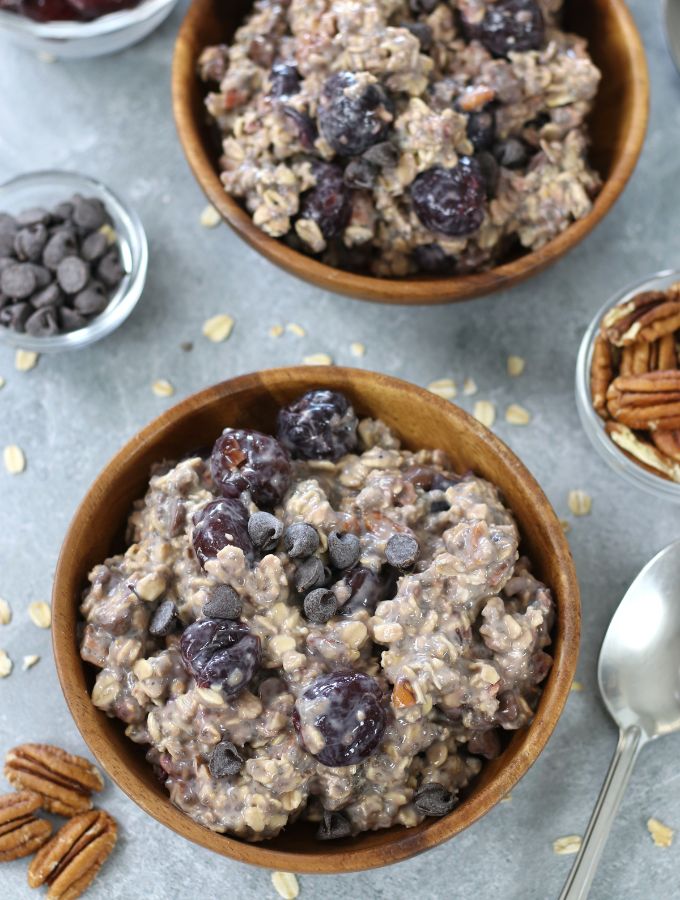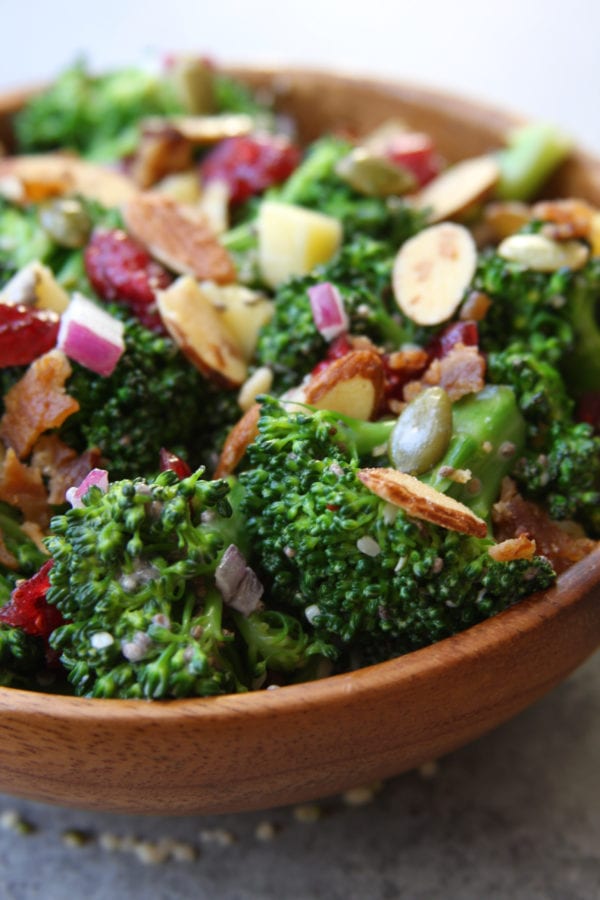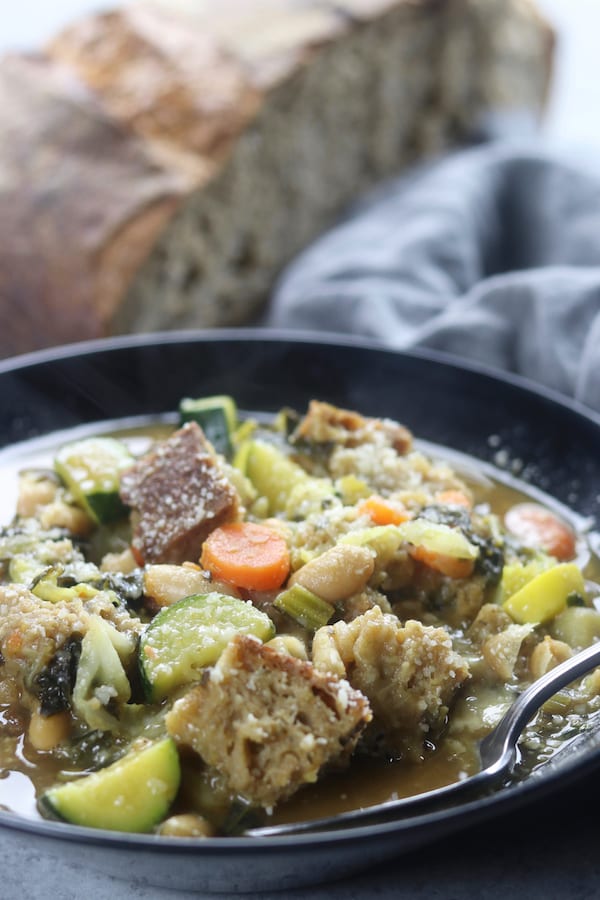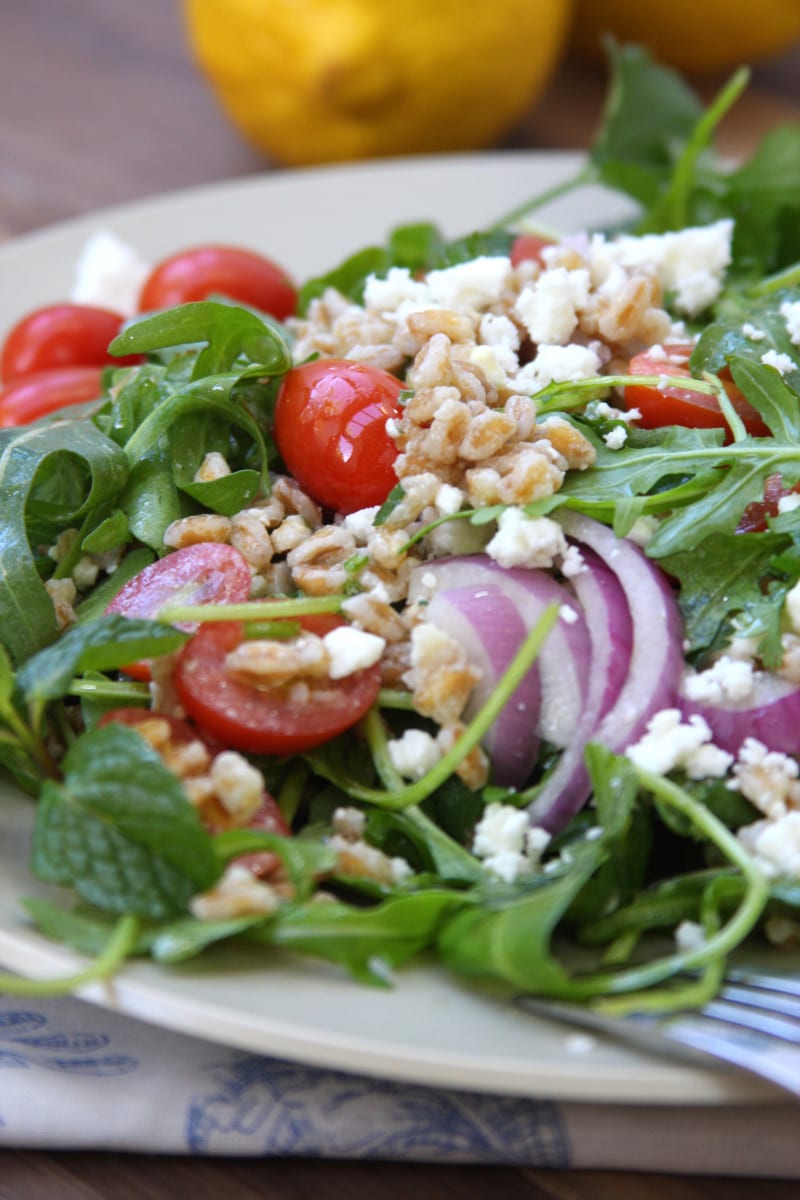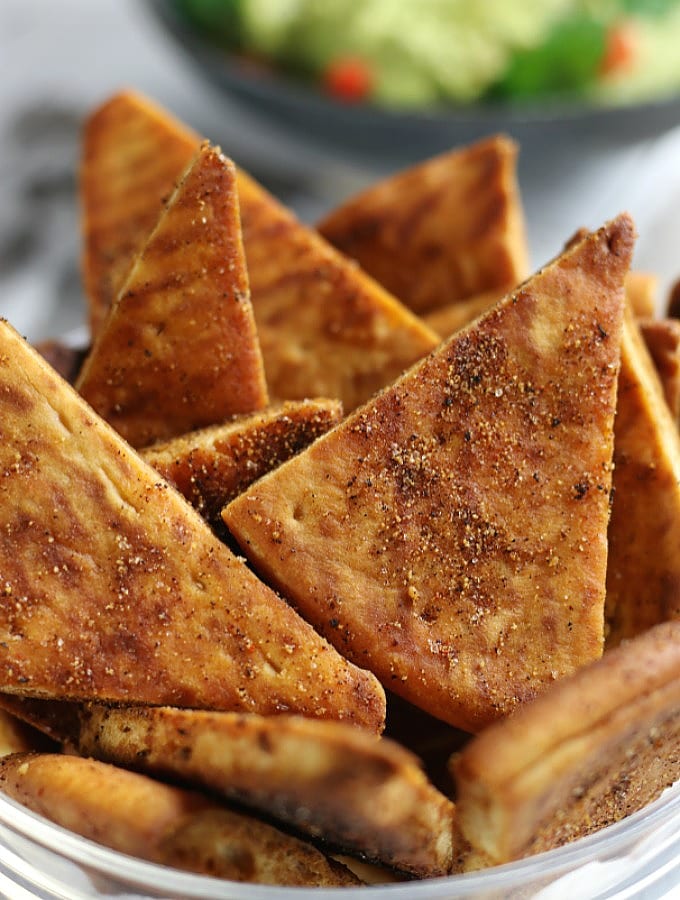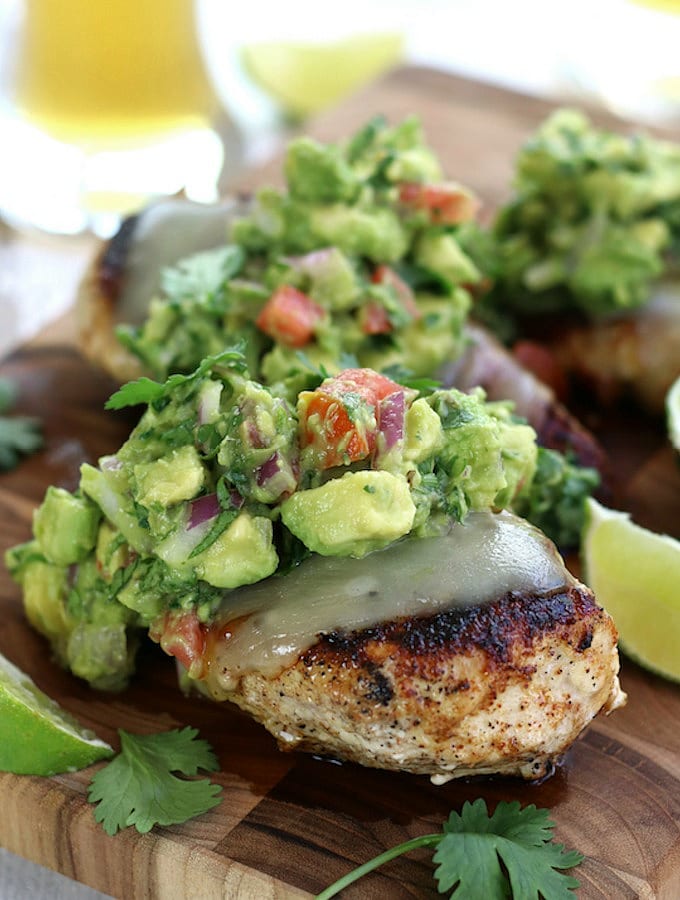Lemon Dijon Dressing
Easy to make, bright and tangy, this Lemon Dijon Dressing is a healthy and delicious way to enjoy homemade salads. Wonderful with seafood, poultry and several types of vegetables. Additionally, tips included in the post for using this dressing as a marinade.
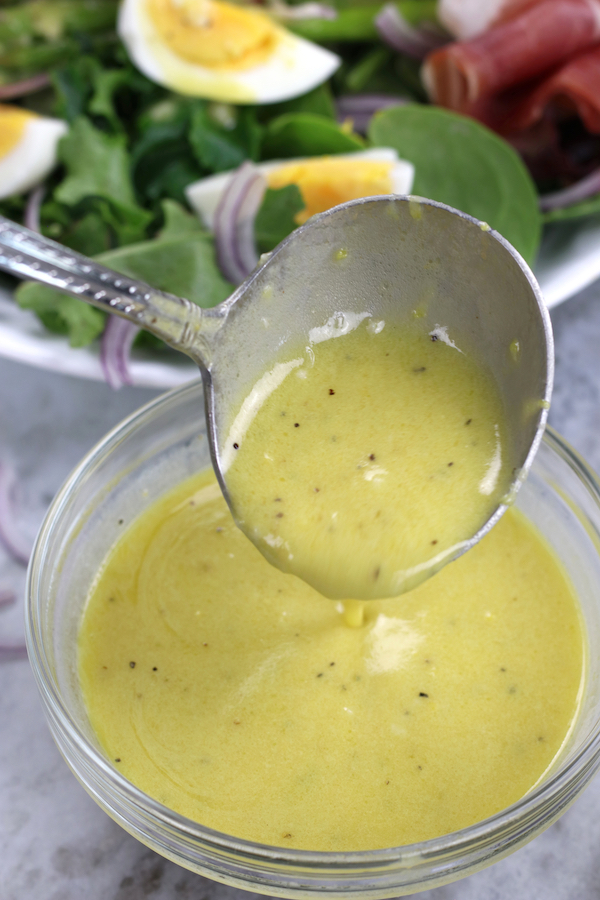
This post may contain affiliate links which I earn a small portion in sales if a purchase is made. Rest assured though, it is never at any additional cost to you.
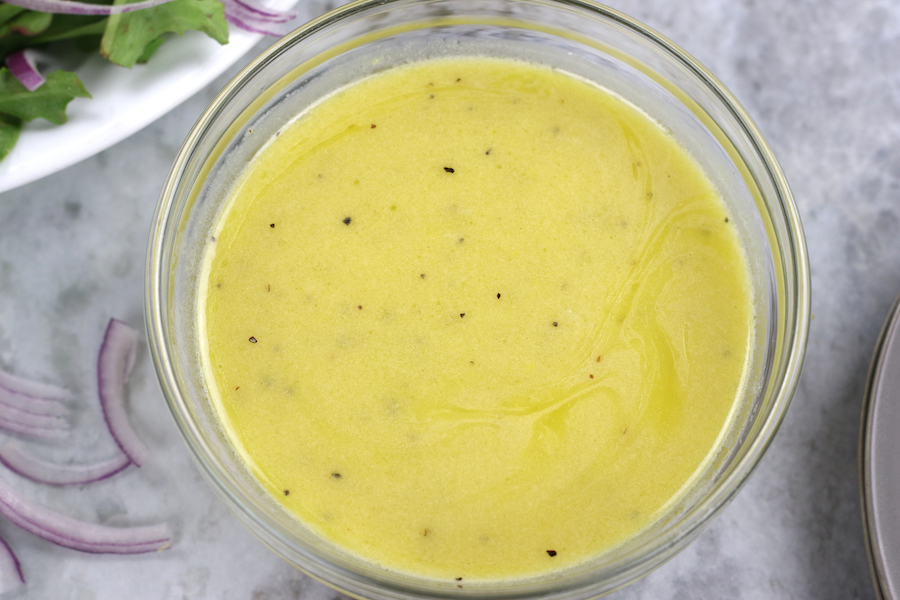
What Makes Homemade Salad Dressings So Amazing
Many people fear that making salad dressings from-scratch will be a time consuming and messy undertaking. The good news, homemade salad dressings really are very easy to make. Here are a few more reasons to fall in love with making your own salad dressings.
- Personalization– With this Lemon Dijon Dressing you can easily make it sweeter or on the tangier side (see Variations section below).
- Healthier– You have complete control over the ingredients that go into your dressing. Basically, you are skipping over all the preservatives, stabilizers and additives that store bought dressings contain. Additionally, eating veggies becomes so much easier with a delicious tasting dressing.
- Freshness– Once you start making food from-scratch there is a huge noticeable difference in the freshness and taste.
- Cost Effective– Most of the ingredients can be bought in larger quantities that last for a good amount of time, allowing for several batches. ProTip: Costco has the best value on bags of lemons.
Ingredients
It is important to note that this recipe is a tangy and very much dijon focused salad dressing. Please see Variations section below for sweeter, spicier or creamier options.
- Dijon Mustard– Originating in France, dijon mustard is a tangy, sharp and somewhat creamy style of mustard. It is made with mustard seeds, vinegar, egg yolks, white wine and seasoning.
- Extra Virgin Olive Oil– For many people, trying to find good quality olive oil can be challenging. A few keys things to look for are darker bottles that have an estate or mill name on it. Also, olive oil has a short shelf life so a harvest date should also be printed on the bottle.
- Lemon Zest– One of the easiest ways to brighten up a recipe when using citrus is to add the zest also. Doing so adds a bright lemony punch.
- Lemon Juice
- Salt and Pepper– Using a good quality flakey salt such as Maldon’s Sea Salt Flakes adds a fresh and clean saltiness to the dressing.
- Crushed Garlic
How To Make
- Add mustard to a small bowl. Whisk the oil into the mustard.
- Add lemon zest to the mustard mixture.
- Whisk in lemon juice until the mustard mixture is emulsified.
- Add in salt, pepper and garlic. Whisk until fully incorporated.
Different Methods of Emulsifying
There are 3 main ways to emulsify (combining ingredients that would normally not combine) this salad dressing.
- Whisking– Using a whisk to emulsify the ingredients as shown in the video.
- Blend– An immersion blender or regular blender is a quick way to make this dressing.
- Hand Shaken– Add all of the ingredients into a salad dressing shaker and hand shake.
Variations
- Sweet– Adding 1-2 tablespoons of either honey, sugar or maple syrup can help to create balance to the tangy element of this dressing.
- Creamy– For a creamy element add in 1/2 cup of either plain Greek yogurt or sour cream. For a vegan option, use a small ripe avocado.
- No Oil– Similar to the creamy option above, eliminate the oil and add either 1/2 cup of Greek yogurt, sour cream or a small ripe avocado. Additionally, add in 1/4-1/2 cup of cool water, depending on the thickness desired.
- Spicy– Cayenne pepper can add in a delicious spicy kick. Depending on the level of heat desired will determine how much to add. It is best to start with 1/2 teaspoon and work your way up from there.
- Herby– 2 tablespoons of finely minced herbs such as tarragon, dill, parsley, rosemary or oregano can add a delicious flavorful spin.
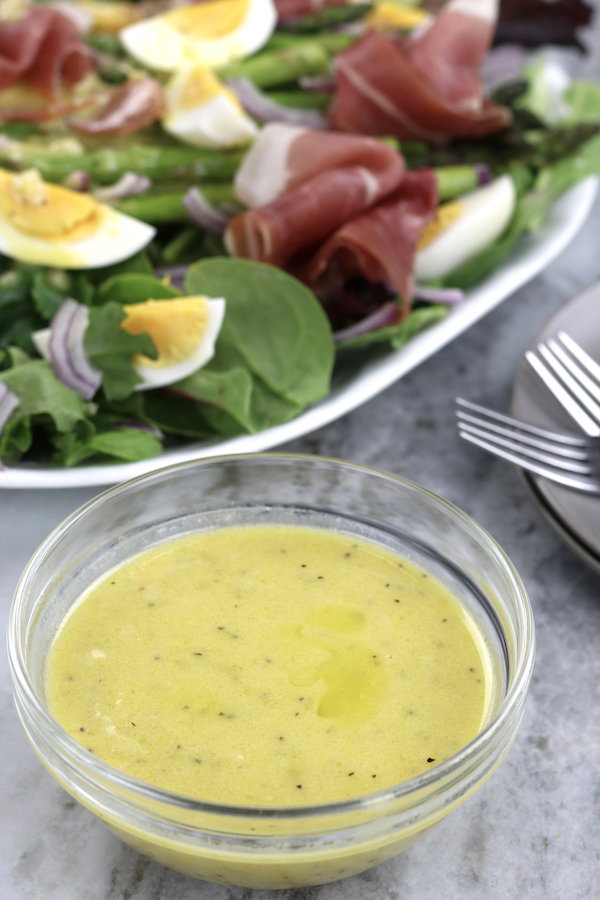
What To Use Lemon Dijon Dressing With
This dressing is absolutely delicious on a bed of arugula with freshly shaved parmesan. Additionally it is amazing on Asparagus Salad with Egg. Here are a few more ways to use this dressing.
- Salad with All Purpose Chicken Breasts.
- As a dipping sauce with Crispy Chicken Strips.
- Served on top of roasted veggies along side Panko Crusted Salmon.
Lemon Dijon Dressing as a Marinade
This dressing makes a delicious marinade for chicken, salmon or shrimp. Additionally the sweet, creamy, spicy and herby combinations (see Variations section above) may be added for additional flavor.
- For chicken, marinate for at least 2 hours or up to overnight.
- Shrimp should be marinated for approximately 2-3 hours.
- Salmon is best with a shorter marinade time of about 1-2 hours.
Frequently Asked Questions
Can bottled lemon juice be used instead of fresh?
Yes, bottled lemon juice can be used for this dressing. However, the lemon zest adds such a delicious brightness that I highly recommend to use fresh lemons if at all possible.
What brand has the best dijon mustard?
My personal favorite is Maille Dijon Mustard. However, to help with narrowing down this decision here is a list of 39 different mustards with rankings and detailed descriptions.
How long does this dressing last in the refrigerator?
Usually with any homemade dressing it is best to use within 3-4 days as a rule of thumb. However, with vinaigrettes that have a high acidity and no dairy products I have gone a few days longer.
Is this dressing vegan?
This salad dressing definitely falls into the category of vegetarian. However, depending on the type of dijon mustard used will depend on whether it is vegan. Also, the addittion of honey will make it no longer vegan.
To keep this dressing vegan, use sugar instead of honey and this brand of mustard.
More Delicious Salad Dressing Recipes
Creamy Lemon Tahini Salad Dressing
Simple Herbed Lemon Vinaigrette
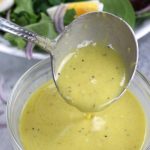
Lemon Dijon Dressing
Ingredients
- 2 tablespoons dijon mustard *see Note #1 below
- 3/4 cup extra virgin olive oil
- 1 large lemon zested
- 1/2 cup lemon juice
- 1 teaspoon salt
- 1/4 teaspoon black pepper
- 4 cloves garlic *crushed, about 1 tablespoon
- 1 tablespoon sweetener of choice *optional, see Note #2 below
Instructions
- Add mustard to a small bowl and whisk in oil. See Note #3 below for different methods of emulsifying.
- Add lemon zest to mustard mixture and then whisk in lemon juice until emulsified.
- Stir in salt, pepper and garlic. Refrigerate until needed.
Video
Notes
- Whisking– Using a whisk to emulsify the ingredients as shown in the video.
- Blend– An immersion blender or regular blender is a quick way to make this dressing.
- Hand Shaken– Add all of the ingredients into a salad dressing shaker and hand shake.
- Creamy– For a creamy element add in 1/2 cup of either plain Greek yogurt or sour cream. For a vegan option, use a small ripe avocado.
- No Oil– Similar to the creamy option above, eliminate the oil and add either 1/2 cup of Greek yogurt, sour cream or a small ripe avocado. Additionally, add in 1/4-1/2 cup of cool water, depending on the thickness desired.
- Spicy– Cayenne pepper can add in a delicious spicy kick. Depending on the level of heat desired will determine how much to add. It is best to start with 1/2 teaspoon and work your way up from there.
- Herby– 2 tablespoons of finely minced herbs such as tarragon, dill, parsley, rosemary or oregano can add a delicious flavorful spin.

